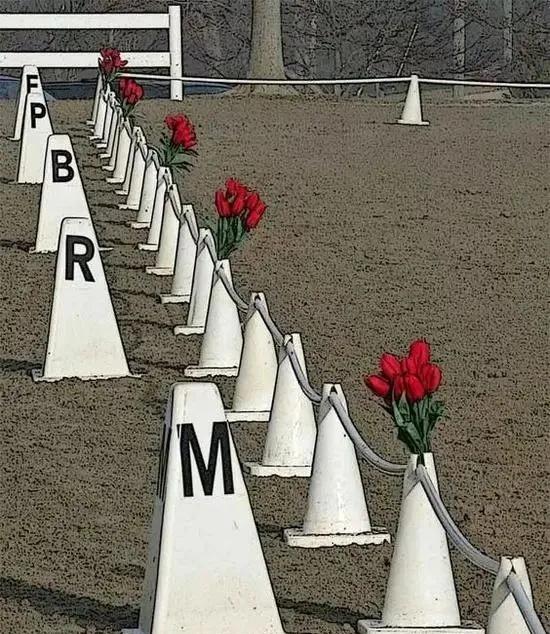Continental horse partner Irish famous horse clothing brand Horsewell Horseware wonderful recommendation: the dressage dance venue is generally rectangular, there are small venues and large venues. The small field is 40 meters long and 20 meters wide. The large field is the standard competition field, which is 60 meters long and 20 meters wide. There are English letters at regular intervals on the four perimeters of the dance venue.

The shorter side of the site is centrally located at pointS A and C, respectively. The rider enters the field from point A, with a distance of 6 meters from the short side to the first letter. The remaining long sides are spaced 12 meters apart. The 5 letters (D, L, X, I, G) on the central line in the middle of the venue are not signs, but that does not mean they do not exist. This requires the rider to pay attention to himself.
The most special is point X, which is located in the center of the field and is the intersection of many training lines.
The dance venue not only has invisible points, but also invisible lines! We can see long sides (M-F/H-K) and short sides (the side where C or A is located), as well as invisible lines, which are:
(1) Central line: longitudinal line A-C
(2) Midline: horizontal line B-C
(3) 1/4 line: in the middle of the long side and the central line, 5 meters away from the long side
(4) Long diagonal: F-H, M-K
(5)短对角线:H-B, K-B, M-E,F-E
(Note that the diagonal line here is different from the diagonal line in mathematics)
Knowledge of the size of the field as a rider is a must. Point letters (including letters that are not displayed) and the distance between lines and points are clearly remembered, so that the accuracy of the route can be improved.
For example, in a round or circle ride, you need to know the 4 points of the circle to help you make a regular circle; when the coach says, "Do a diagonal step from point F to point X" or "Stop at point G", you need to know exactly where these routes are.